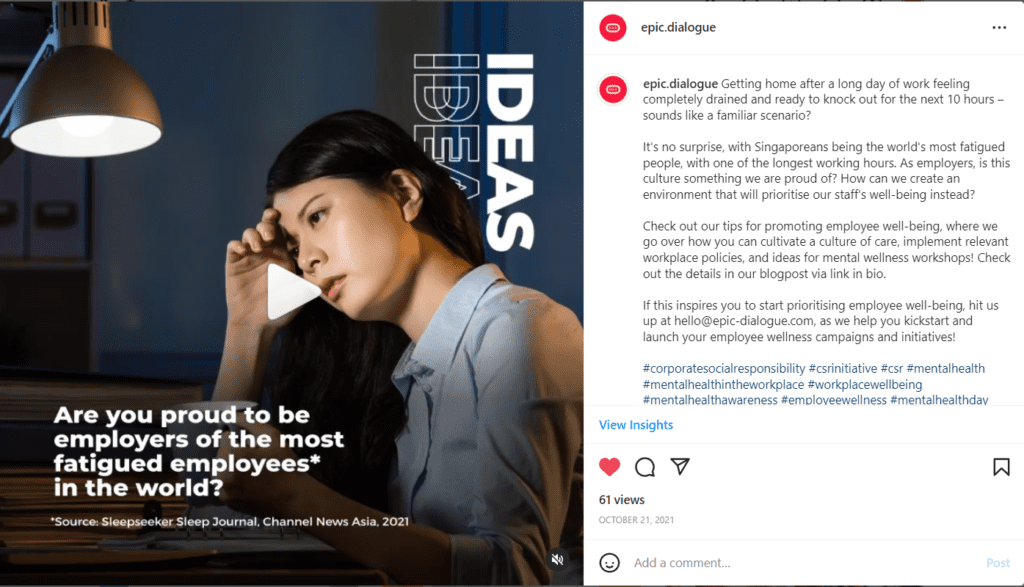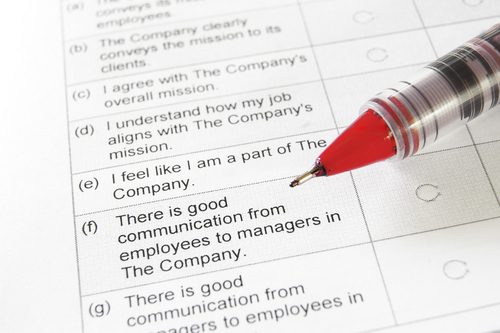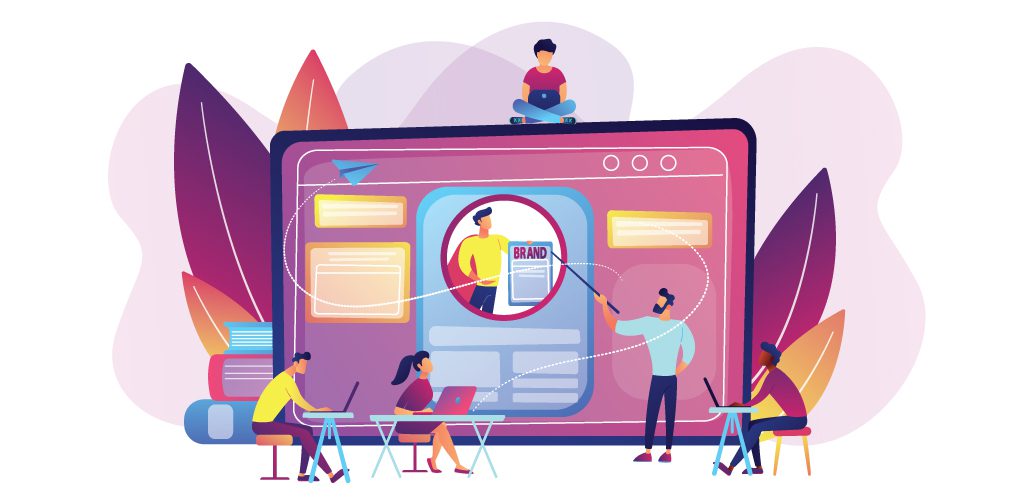What is Employer Branding?
Each company has its reputation, whether of its products, services, leaders, teams, or history. This reputation can inspire distinctive perceptions in the minds of people who interact with your brands. A company has another layer of a brand that has something to do with how your company is perceived as an employer. This layer is called employer branding, and it resonates in the hearts and eyes of your current, former, and future employees.
An employer brand is about defining your company’s value—why it’s unique and what it stands for—and aligning these values with the talents you are looking to attract. A sound employer branding will drive a positive spark around your company, resulting in a motivated and satisfied workforce. In turn, it creates a positive experience for other stakeholders.
The Future of Work
These days, the work has undergone a significant disruption, and it eventually shifted the employees’ perspective towards the job they do. Employees are more conscious about why they choose their jobs, the benefits they obtain, the impacts that they produce through their work, and how they can do their job better.

More people demand their employers to provide work flexibility and perform a holistic approach to take care of employees’ well-being. Therefore, you may see some emerging trends such as the shift towards a hybrid workforce, demand for holistic employee engagement strategies, and mass digitalisation in most aspects of work.
3 Employer Branding Strategies to Align with the Future of Work
The dynamic shift in the modern job industry has posed a threat to businesses, making attracting talents seem more competitive and complex. According to A Great Place To Work, 86% of workers will not apply to or continue to work for a company with a bad reputation with former employees or the general public. As more employees raise their expectations toward their company, we as employers need to look beyond financial objectives to consider the needs of our employees.
As a thriving business, you also need to attract the best talents, and the critical path to finding them is to cast the impression that your company is a great place to work. Therefore, having a strong employer brand will provide a better advantage for companies in the competitive recruitment market.
Here are 3 employer branding strategies that you can implement for your business.
1. Increase employee engagement through an internal communication strategy
Employee engagement is commonly associated with an umbrella term that embodies employee work satisfaction and passion. However, in its core value, employee engagement refers to employees’ emotional commitment to their organisations; and this commitment includes the achievement of mutual goals. As an outcome, this authentic commitment can lead to better employee advocacy. To achieve good employee advocacy, we need to understand the ongoing shift in modern employees’ behaviour.
Nowadays, more and more workers care about what companies provide for their personal well-being—including the opportunity to achieve a better work-life balance and personal growth; and authentic connection with employers. Even the numbers are higher among Gen Z workers.
According to Firstup, Gen Zers prioritise benefits such as paid time off, mental-health days, or any activities that create a sense of community over others. This group expects more transparent and top-down communication from leaders that speaks to them as individuals.
Therefore, to craft good employee engagement strategies, we need to align with the employee’s values. Here are some of the ways to engage your employees:
- Allowing employees to connect with experts. Employees do not expect to work individually without consistent guidance from their employers. Particularly with more Gen Z workers filling up the workplaces in the near future, employers can initiate a consultancy programme for employees to support them. It could positively impact the work-life of your workers and boost your overall business productivity.

- Cultivating the culture of development and learning. Employees love when they feel engaged with the company they work for, especially if the company provides endless self-development opportunities. Employers can step up by providing free skill-development courses and open up to a 2-way discussion to talk about employees’ life or professional goals.

- Embracing the culture of appreciation within your team. Whether by celebrating an employee’s work anniversary or promotion, providing opportunities for employees to be recognised can boost their morale and help them feel connected to their company. Our client, Charterhouse, embraces the culture of appreciation by publishing content about employees’ promotions, achievements, and even newly-hired employees.

2. Make holistic approaches to promote overall employee well-being
Employee well-being is an essential factor that determines the overall worker’s performance, including productivity, work satisfaction, and tendency to experience work-related stress. Work-related stress can eventually lead to burnout—an occupational phenomenon recognised by the World Health Organisation that can reduce professional efficacy and cause feelings of discontent in workers.
The rising culture of ‘always on’ among Asian workplaces has created more tendency for employees to be connected with their work 24/7. In return, it has a significant effect on workers’ physical and mental health. For Singapore in particular, a survey done by Cigna 360 Well-Being Survey shows that 92% of Singaporeans workers are stressed, 8% higher than the global average of 84%. A staggering statistic shows that stress-related illnesses represent nearly 20% of total health expenditure, at US$2.3 billion.
To address this issue, we need to begin by discarding a common justification: work-related stress is a normal occurrence in almost every workplace. Employers can also take action by fostering a supportive environment that embraces the culture of care and open communication.
Moreover, there are other ways that you can do to promote employee mental well-being:
- Showing your advocacy towards mental wellness. You can start by creating positive content related to mental wellness—it can be in the form of educational content. Employers can also conduct a webinar with a mental health expert and invite the employees to participate.

- Start measuring your employees’ well-being personally. Employers need to ask them personally to understand better, how our employees are doing in terms of their mental health. The measurement could be done by conducting a monthly/weekly employee survey and providing an opportunity for a 2-way consultancy between your employees and the HR representative. By reading the employee feedback, it opens a more significant opportunity to develop a better approach to tackling mental health issues in your workplace

- Conducting corporate events or workshops. There are special ways to bring employees together and engage in one moment, from conducting outdoor activities to fun and productive workshops. Through these series of events, you can add activities that can enhance learning capabilities through team bonding and leadership development.

3. Provide good support for a hybrid workforce environment
Hybrid work is a blended workforce model that allows employees to return to the workplace (WFO) and others to continue to work from home (WFH). The hybrid provides more flexibility since employees can choose between working from home or in the office, based on their needs and preferences.

As in many other places, there is a growing demand for integrating a hybrid workforce in Singapore. A survey conducted by Randstad found that 41% of Singaporean workers would prefer to continue working remotely (after working from home for almost 2 years) than receive a bigger bonus.
“The demand occurs due to the benefits that these employees experienced while working remotely. The common benefits include reduced time and cost for commuting, more personal and family time, and higher productivity” – Jaya Dass, managing director for Singapore and Malaysia at Randstad.
According to ManpowerGroup Employment Outlook Survey Q1 2022, Singaporean employers recognise the need for a transition toward hybrid work, except for those in production & manufacturing and customer-facing roles (where 45% and 29% of employers respectively expect their employees to work onsite).
Source: ManpowerGroup Singapore
How could employers redefine their Hybrid Work model? Although Hybrid Work offers employees more flexibility to control their workflow and the opportunity to have a better work-life balance, some challenges need to be overcome.
One of the challenges during remote working is the efficiency of communication. A lack of effective communication can limit the ability of employees to collaborate and grasp ideas quickly. Although several online communication platforms have provided in-app features that allow workers to have better online brainstorming and group discussion, sometimes, these features still have some limitations.
Moreover, according to Singapore’s Manpower Research and Statistic Department (2020), remote working did not necessarily reduce employees’ working hours. In fact, only 9% of workers experienced shorter work hours, posing a more significant challenge to achieving a better personal well-being.
Therefore, to overcome these challenges in the future, there are some strategies that you can apply:
- Maintaining frequent contact with your employees during the Work from Home (WFH) period. As team leaders, always organise regular meetings to keep everyone on the same page. Considering that we cannot supervise our employee’s activity from time to time, always make sure to get some updates from them. Always encourage employees to have active and open communication.
- Showing that you really care about your employees. Caring about your employee’s well-being should go beyond words expression. One of the ways you can do to appreciate your employees is by giving them gifts on some special occasions. Gifts in the form of parcels, fun desk items, or branded clothing can be good options for you.
- Facilitating employees with access to collaborative platforms. Utilising productivity apps like Slack, Trello, or Notion can help your employees to make collaborative projects easier. With these tools, employees can also keep track of their workflow during remote working.
- Keeping your employee away from the ‘always on’ culture. The necessity of constantly checking emails, news, social contacts, or anything related to work (24 hours a day, 7 days a week) may affect their physical and mental health in the long run. This ‘always on’ culture will make employees tend to feel occupied by their job. Therefore, always encourage your employees to balance their working hours, so that it may not disturb their personal life on a day-to-day basis.
Study Case: Singapore Post Connecting All
The COVID-19 pandemic has resulted in many of us feeling isolated, which may impede workplace morale and personal well-being. The force of shifting toward a remote working environment may give us more flexibility and personal time. However, along the time, we might feel like losing the real sense of connection with other people outside our home, including colleagues.
There might be a moment when you miss talking to your colleagues, brainstorming ideas together, and arguing about work in a real workplace. Although we were still able to communicate through video calls or messaging apps, the quality of communication is still regarded as inefficient. In turn, many employees feel less connected with their colleagues.
Learn more about SingPost Connecting All Employer Branding Campaign here.
In a push to keep employees connected during the pandemic, Epic Dialogue was tasked to create a comprehensive internal communication campaign entitled Connecting All. The campaign is set to drive all SingPost teams to connect with the company and fellow employees through a newly developed Intranet app, called SPhere.
It encourages SingPost staff to share their best workplace memories, and how similar interactions can also be achieved using the SPhere App. While technology cannot replace actual human interaction, the concept aims to rally the collective SingPost spirit by bringing the staff of SingPost together through the use of SPhere.
Moreover, this internal communication campaign includes the conceptualisation and development of campaign visuals supported by photography and infographics. Followed by through-the-line communication materials such as a staff guide book, corporate swag kit, emailer, post as well as a campaign video featuring 5 of their exemplary staff members from different departments.
As a result, the campaign has led to increased awareness of the Intranet among employees, better employee communication during the pandemic, and making vital information accessible to all stakeholders.
To achieve a strong employer brand, all members of the board of executives, leadership, and management teams must fully commit to executing the strategies. Understanding the changes in today’s working trends gives you a clear and concise picture of how you can align the employer branding strategies accordingly.
The key to a great employer brand is nurturing good values from the inside out. Make adjustments whenever growth areas are there to be improved. Before starting the journey, make sure you have set up the right communications strategy.
Looking to craft effective employer branding strategies for your firm? Epic Dialogue is here to bridge the gap between employers and employees. If you need help creating employer branding strategies, reach us at hello@epic-dialogue.com.



